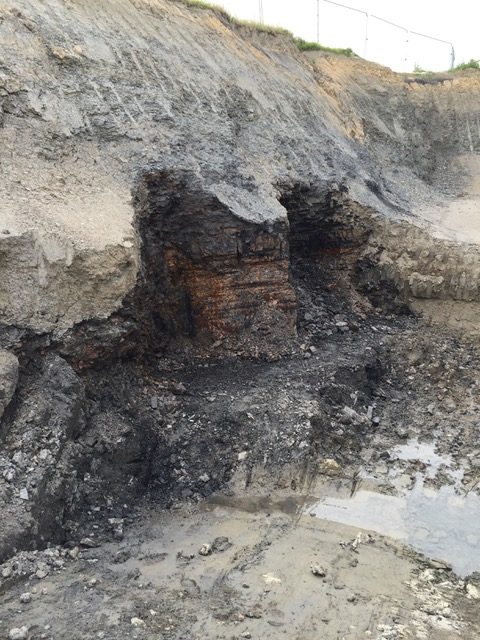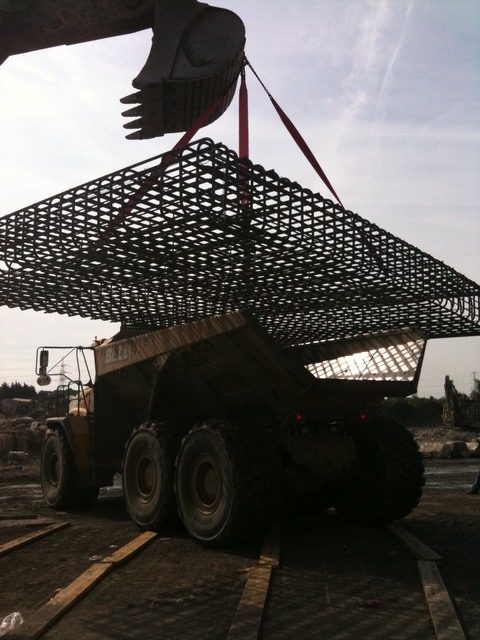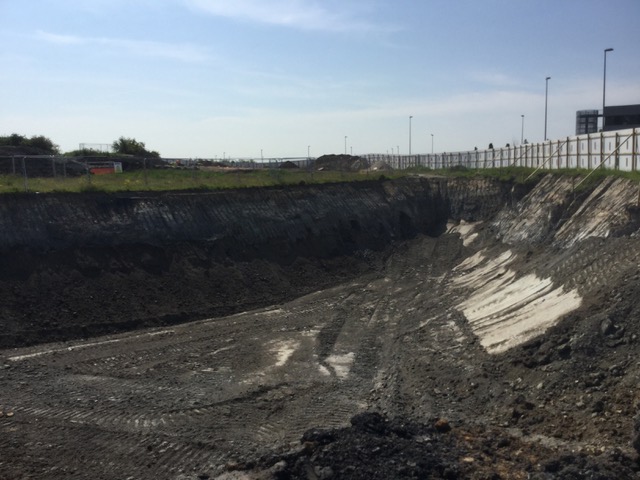As not all sites are suitable for prior extraction, due to size or depth for example, we can advise at site investigation stage, on a confidential basis, to evaluate the suitability of prior extraction from the proposed site.
• The next step is to model the site, allowing for the extraction of the coal and the reinstatement, engineering the compacted backfill to NHBC specification, validated by others, to leave the site at the required development platform level.
• If this is acceptable, a contract is agreed for the prior extraction and an application for prior extraction and the removal of the coal as a ground stabilisation measure is submitted.
• On most sites, the commercial terms vary, sometimes we will carry out the excavation, coal recovery and reinstatement at an economical cost, in return for the rights, to market the coal, exclusively. This is also dependent on the international price of coal.
• On other occasions we would just recover the coal and market it.
• Should the site have contamination present, in the excavation area, this can be removed as part of the excavation works, stockpiled and then treated by others.
• The permitting of prior extraction or ground stabilisation, is understood by most Planning Authorities as necessary for the development to proceed, and this can be covered either by satisfying a planning condition or a separate approval of the Incidental Coal within the permitted development. Incidental, meaning that this is incidental to the main purpose of the planning permission but enables the development to proceed.
• Once approval has been received from the council, then this document is attached to an Incidental Licence application to the Coal Authority, who will then issue a Incidental Coal Agreement, allowing us then to enter the coal and remove it and conditions are also included, regarding the avoidance of spontaneous combustion, by clay sealing the old workings and the recording of the coal extracted.
Documentary Reference
• An example of old coal working and mining subsidence and what you would be trying to grout and also the relationship of depth to top of coal.
• The recent CIRIA Guidance C758D September 1999 discusses the ratio of cover to coal, with relevance to stability.
• At para 5.3.3 Assessing the acceptable cover above workings, in precis, it states, that the 10 times cover plus seam thickness to 1m of void, has been’ the rule of thumb’, for some time.
• The degree of protection varies, according to location, and has been proven to provide conservatism and has served the industry well to date, often irrespective of detailed knowledge of bedrock conditions.
• However, Taylor and Fowler (2007) have cast doubt on this ‘rule of thumb’ (10 times measure) on the basis of, ‘caution should always be exercised in assessing the stability of workings and concepts of safe depth, below which it is assumed that, remaining pillars of coal, will have crushed out and voids choked, are unreliable.’
• CIRIA, recommend an intermediate approach, of one that will optimize ground treatment, be applied, which, from experience, we agree with. Site investigation is paramount to determining this and this means, that shallow drilling, to establish the base for the building, is never quite enough and if shallow coal is present and there should be a number of drill holes that go beyond this depth, to fully intercept known coal horizons.
• It is also possible to encounter unrecorded workings, which need careful interpretation.
• Coal Mining Records were not required until the mid 1870’s and it was not unknown for adjacent mine owners to follow the same seams, even to the extent that both sets of miners could hear each other working in the same seam!
• The British Geological Survey and the Coal Authority, hold excellent old mining records but it is still possible to be misdirected.
Permits and Licences
Once the planning permission for the development has been issued, it may or may not have a condition regarding the ground stabilisation required.
Should there be no such condition, an application to the relevant mineral planning department, to carry out the work, is submitted and is determined by the officers and a confirmatory letter is issued, allowing the work to proceed.
All the coal in the UK is vested in the crown and administered by the coal authority and where the coal has to be removed, as a ground stabilisation measure to enable the main development to proceed, an application to the coal authority for an incidental licence, accompanied by the relevant councils approval of the work, will be needed.
Processing of this application can take approximately 4/6 weeks before coal extraction can commence. This documentation can be dealt with by Harland directly as part of any agreement, including costs and any royalties due.
Carbon Accounting
Having taken advice, Harland’s understanding is that it is the end user who accounts for this and not any other party involved in the process of removal and disposal.
Void Migration
This takes place when the overburden material at the top of the old mineworking begins to collapse into the bottom of the working and the void eventually makes its way to the surface.
In this example, there was a gas main directly above the working at shallow depth.

Mineshaft Cap
This picture shows the framework to be placed over the mineshaft, prior to the concrete pour which will seal it permanently.

Clay Seal
This picture illustrates a clay seal in place in the boundary, sealing off the coal seam void. It acts as a seal against the ingress of gas and water and is a requirement of the Coal Authority Incidental Licence.

